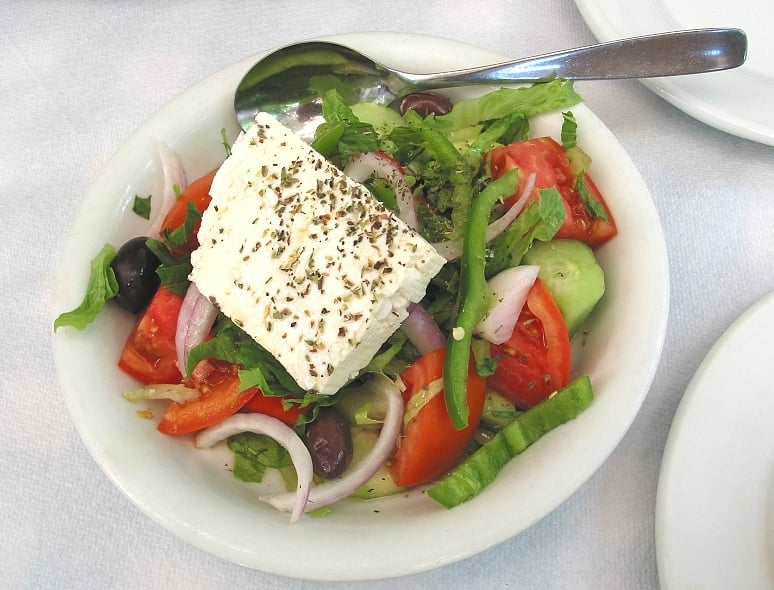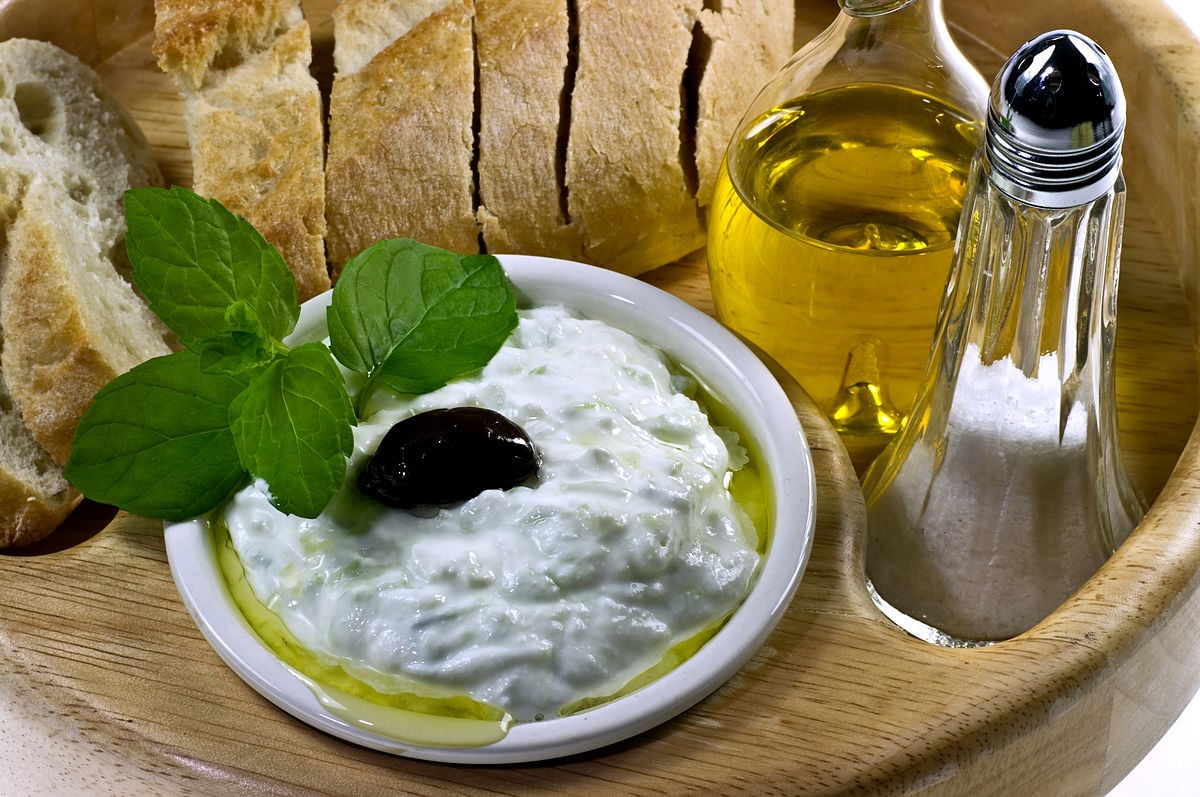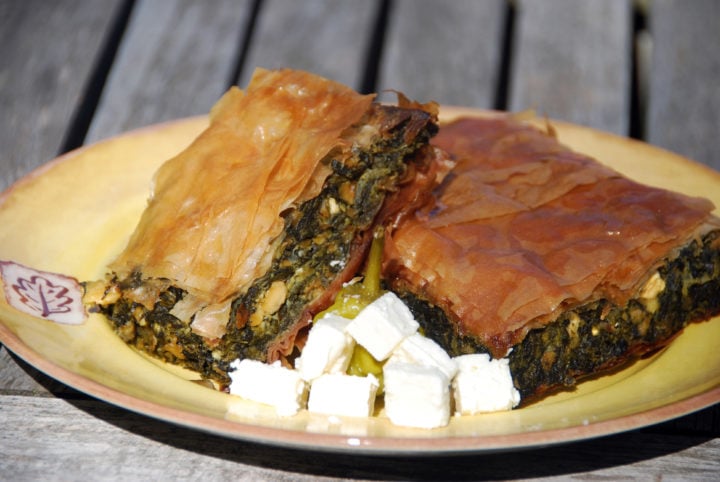
Greece offers vegetarians a large variety of highly nutritional, tasty dishes to choose from. Using fresh ingredients, prepared with age-old recipes, Greek cuisine is full of delightful surprises for which your taste buds will be thankful.
Greek cuisine is based on fresh seasonal vegetables and fruit, grains, legumes, and greens—the perfect combination for vegetarians and vegans.
Across Greece, you will find a large variety of wholesome and flavorful but meat-free dishes for your palate to savor. It goes to show that Greek food is not just souvlaki, moussakas, or a lamb being roasted on a spit.
Vegetarianism as a practice, the idea of nonviolence to animals, has its roots in ancient Greece as well as ancient Indian civilizations. Ancient Greek historian Plutarch could be considered the first outspoken vegetarian in the West, as he believed that it was “immoral” to eat animal flesh.
In his book Morals, Plutarch has a chapter on meat-eating in which he writes that since man has access to so many fresh fruits, vegetables, and nuts, the fact that he is forcing himself to eat bloody animal flesh while “trying to cover the taste of blood with thousands of spices” is inconceivable.
Appetizers, salads, and dips for vegetarians
Choriatiki is a very popular Greek salad which is made with freshly cut thick wedges of tomatoes, cucumber and onion slices, feta cheese, delicious olives, virgin olive oil, and flavorful, crushed, dried oregano leaves; it’s the perfect starter that will whet your appetite for the main course.

Dakos salad is a Cretan salad, which contains a piece of round water-dampened barley rusk topped with chopped fresh tomatoes, crumbled feta or myzithra cheese, olive slices, capers and a sprinkle of dried oregano (Useful tip: Allow the juices to soak the rusk for a few minutes, then taste).
It is highly recommended that one try the following tempting mezedes (appetizers or side dishes): fried or grilled vegetables or cheese, including such delicacies as fried tomato balls, green vegetable patties, and saganaki cheese (fried feta or hard yellow cheese). Sliced zucchini can be boiled or fried. Zucchini is also used to make delicious patties (mixed with herbs and/or cheese). The sweet-tasting fried slices of eggplant and the rice and herb—stuffed zucchini blossoms are two must-try dishes, mostly served in the summer and autumn.

Accompany your vegetarian appetisers with some great-tasting dips:
- Taramosalata: a mousse salad made from fish roe blended with lemon, bread, olive oil.
- Melitzanosalata: A puree of grilled or smoked aubergines with olive oil, garlic and vinegar.
- Tzatziki: It’s the most famous Greek appetiser, made with creamy Greek yoghurt, grated cucumber & garlic, and finely chopped dill, blended with oil, vinegar and salt.
- Skordalia: it’s a vegan dip made with mashed potatoes or bread, garlic, olive oil, vinegar, salt & pepper. It usually accompanies fried cod, and boiled beets (patzaria in Greek).
Main courses in Greece for vegetarians
Legumes & pulses
Pulses have been an essential part of the Greek diet since antiquity. Yellow split peas, gigantes (large dried white runner beans), broad beans, lentils, black-eyed peas, and chickpeas all hold an important place in the Greek cuisine and are an essential part of the Mediterranean Diet.
Pulses are cooked in hot nourishing soups in the winter; they are also great in salads mixed with herbs and vegetables in the summer.
Northern Greece yields top quality pulses, as the soil is rich in potassium, an element that makes them more flavorful and contributes to shorter boiling times. These include: beans from Lake Prespes area; lentils from Voio, Kozani; yellow split peas from Feneos, Korinthia and from Santorini; lentils from Eglouvi, Lefkada; and chickpeas from Larisa or Grevena. These are all well-known, top quality produce on account of each area’s favorable microclimate.
Ladera (meaning cooked with olive oil)
Olive oil has always been a product precious to Greeks, one that has been considered sacred since ancient times.
Ladera dishes are colorful and flavorful. Vegetables are cooked either fresh or dried in the pot at low to medium temperatures, so as to best retain their shape and flavor.
Below are some tasty Greek vegetarian dishes for you to try.
- peas and okras (stewed with tomatoes)
- artichokes (cooked with potatoes, carrots, lots of finely chopped dill, and lemon juice—the ‘a la polita’ dish)
- zucchini, potatoes, carrots, bell peppers, eggplant, and onions baked with tomato sauce and spices (a dish called ‘briam’)
- eggplants cooked with tomatoes, onions, garlic, parsley, dill, and spices (a dish called ‘imam’)
- oven-baked stuffed tomatoes, peppers, zucchini, and eggplant filled with a mixture made of rice, the flesh of the above vegetables, herbs, and spices (a heavenly dish called ‘gemista’).
Pies, the vegetarian way in Greece
Pies hold a special place in the country’s cuisine, as they are among the oldest, simplest, and most delicious dishes one can find in Greece.
There are so many variations of ”pites,” as they are known in Greek, that it may be nearly impossible to determine precisely how many different kinds of Greek pies there are out there.

Pies are very popular among Greeks, and they come in all sorts of variations: savory, sweet, dressed with phyllo sheet or flaky pastry (called ‘sfoliata’), round, triangular or coil-shaped with either few ingredients or more elaborate ones.
Age-old household management rules point towards the optimum use of seasonal produce, resulting in a large variety of tasty creations. Pies can be served as a main or side dish or as a healthy and tasty snack during the day.
Pie filling variations depend only on the maker’s imagination and the local bounty of nature. Practically everything can be included in a pie: cheese, greens, pasta, rice, trachanas, and vegetables, among other things. Greek ingenuity has led to a large number of pie creations: cheese pie, spinach pie, leek pie, nettle pie, mushroom pie, onion pie, cabbage pie, potato pie, pasta pie, pumpkin pie, and many more.
Greek Pasta
You can find Greek pasta in many a shape and size; some types contain milk and eggs. They can be a simple yet very tasty mixture of durum wheat or semolina, water, and salt.
The pasta-making tradition is kept alive mostly by women living in the countryside (who usually prepare the pasta and allow it to dry out in the sun during the summer). They also participate in regional cooperatives, producing and selling a large variety of artisan pasta.

Such regional co-ops exist all over Greece on the mainland and islands alike. In these co-ops, you will find popular Greek pasta such as:
- chylopites (noodles that come in two basic shapes, namely small squares or thin, fettuccine-like strips)
- kritharaki (orzo)
- trachanas (a granular pasta made with semolina flour, wheat flour, or cracked wheat, kneaded with milk, yoghurt, buttermilk)
- lazania (broad strips of egg pasta),
- fides (angel’s hair)
- astraki (a small star-shaped pasta)
See all the latest news from Greece and the world at Greekreporter.com. Contact our newsroom to report an update or send your story, photos and videos. Follow GR on Google News and subscribe here to our daily email!



